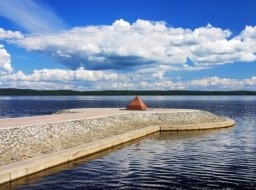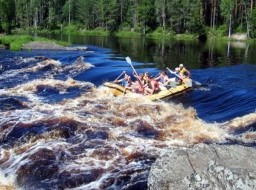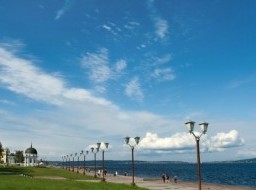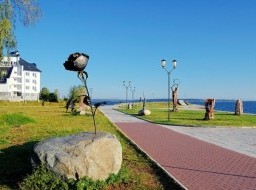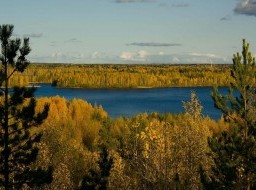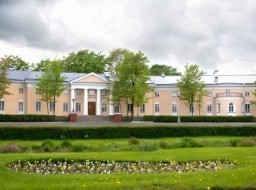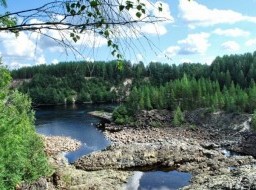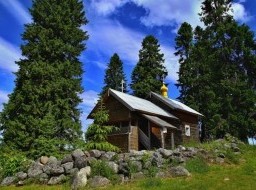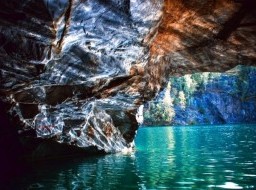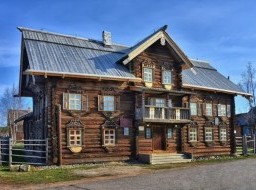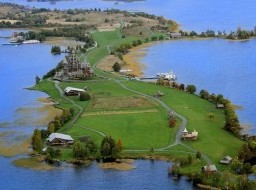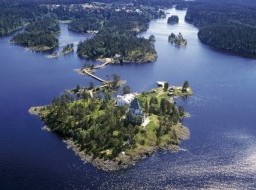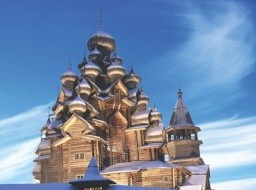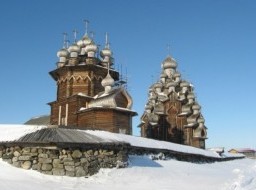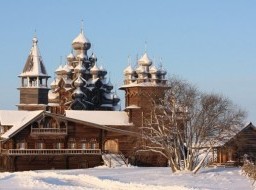Karelia
Karelia Republic is a federal subject of Russia located on the border of Western and Eastern Europe, part of the Northwestern Federal District. It is a remarkably beautiful land of white nights, boundless forests and blue lakes. Petrozavodsk is the capital city of the region. The population of Karelia is about 630,000 (2015), the area - 180,520 sq. km. The Republic of Karelia is situated in northern Europe, in the north-western part of Russia. In the north-east the region is washed by the White Sea. The western border of Karelia (798 km) is the state border of the Russian Federation and Finland, the European Union. The weather in Karelia is changeable. The climate is mild with plenty of rainfall. Winters are snowy, usually without severe frosts. Summers are short and warm, with plenty of rainfall. The average temperature in February is minus 9-13 degrees Celsius, in July - plus 14-16 degrees Celsius. Karelia has about 60,000 lakes, including the two largest lakes in Europe - Ladoga and Onega. Other large lakes: Nook, Pyaozero, Segozero, Syamozero, Topozero, Vygozero, Yushkozero. The White Sea-Baltic Canal (228 km) connects the basins of the Baltic and White seas. The national composition according to the 2010 census: Russians (82.2%), Karels (7.4%), Belarussians (3.8%), Ukrainians (2%), Finns (1.4%), Veps (0.5%). The largest cities in Karelia are Petrozavodsk (275,000), Kondopoga (31,000), Kostomuksha (29,000), Segezha (27,000). There are about 27,000 rivers in the region. The largest rivers are Vodla (149 km), Kem (191 km), Onda (197 km), Unga, Chirka-Kem (221 km), Kovda, Shuya, Suna with Kivach and Vyg waterfalls. Forests cover about 85% of the territory of Karelia. The main minerals are iron ore, titanium, vanadium, molybdenum, precious metals, diamonds, mica, building materials. The economy of Karelia is based on metallurgy, mining, wood and paper industries. Because of the low population density, the road network is not much branched. Historical and cultural identity of Karelia, which distinguishes it from other regions of Russia, is determined by cultural heritage of four indigenous peoples historically living in this region - Karels, Finns, Veps, Russians. The borderline location of Karelia has often brought it to the foreground of major events in European history. Karelia has always been influenced by Western, in particular Scandinavian countries, which affected the culture and the mentality of its inhabitants. Today, this region can become an economic and cultural bridge between East and West. The official language in Karelia is Russian. At the same time, there are peoples in the region whose written language is based on the Roman alphabet - these are Karels and Veps. Karelia, having a favorable geographical location, unique natural and recreational resources, centuries-old cultural and historical heritage, is attractive for Russian and foreign tourists. Karelia is one of the most famous Russian territories in international tourism thanks to the presence of unique architectural, cultural and historical sites on the islands of Kizhi, Valaam and Solovki. They are included in the list of UNESCO World Heritage Sites and are a national treasure of Russia. Karelia is the birthplace of Karelian-Finnish epic “Kalevala” (literary monument of world importance). There are preserved ancient Karelian, Vepsian, Pomor villages with distinctive architecture that are of great interest for fans of ethnographic tourism. Almost one million hectares, or more than 5% of the total area of the region, are protected areas: the national parks “Paanajarvi” and “Vodlozersky”, “Kalevalsky”, the natural park “Valaam Archipelago”, preserves “Kivach” and “Kostomukshskiy”, 46 nature reserves, 108 natural monuments. Karelia attracts tourists with its pristine nature, low population density and competitive prices. In summer this region is popular with lovers of water tourism, travelers on bicycles and cars, fishermen and hunters. Recently equestrian tourism has begun to develop. In winter you have an opportunity to engage in all types of skiing, take part in a safari on dog or reindeer sledding, take a trip on snowmobiles. Tourists visiting the western part of the republic, declared the border area, should have identification documents in possession for a possible passport control. 10 must-do things in Karelia It is a remarkably beautiful land of white nights, boundless forests and blue lakes. Petrozavodsk is the capital city of the region. The population of Karelia is about 630,000 (2015), the area - 180,520 sq. km. |

